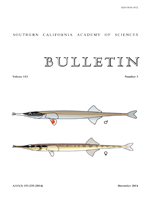Tidal cycles are important cues for many marine and near-shore animals. Birds that typically feed at the water's edge during daytime low tides are rarely present on beaches at night. However, we found that several species of diurnal birds reliably attended and preyed upon the nocturnal spawning runs of a marine fish, Leuresthes tenuis, the California Grunion (Teleostei: Atheriopsidae) on the shores of Malibu Lagoon State Beach (MLSB), Los Angeles County, California, USA. Avian hunters of California Grunion included Black-crowned Night Heron Nycticorax nycticorax, Great Blue Heron Ardea herodias, Snowy Egret Egretta thula, and Western Gull Larus occidentalis. Spawning runs of California Grunion are synchronized by tides within a narrow window of time, two hours following the semilunar high tides of full and new moons. These silverside fish aggregate en masse predictably, and further increase their vulnerability by fully emerging from the water while spawning. This allows the birds to capture California Grunion terrestrially. On nights when spawning runs of California Grunion could potentially occur, birds were present on MLSB, often before the fish began to run onto shore. Number of birds was high for the nights of likely runs whether after full or new moons, whether or not the fish appeared, but not on other nights. We suggest that birds rely on tidal cues to anticipate spawning runs of California Grunion, not the amount of moonlight or the actual presence of fish on shore. Shorebirds were more likely to forage at night at sites close to their upland roosting and nesting areas than at sites with less upland habitat. Observers on nearby Will Rogers State Beach and Topanga State Beach saw comparable spawning runs of California Grunion but reported significantly fewer avian predators. At MLSB, when tide conditions were right, avian predators appeared on the beach with even greater predictability than did their potential prey.
How to translate text using browser tools
1 December 2014
Avian Predators Target Nocturnal Runs of the Beach-Spawning Marine Fish, California Grunion, Leuresthes tenuis (Atherinopsidae)
Karen L. M. Martin,
Jennifer Griem Raim
ACCESS THE FULL ARTICLE





